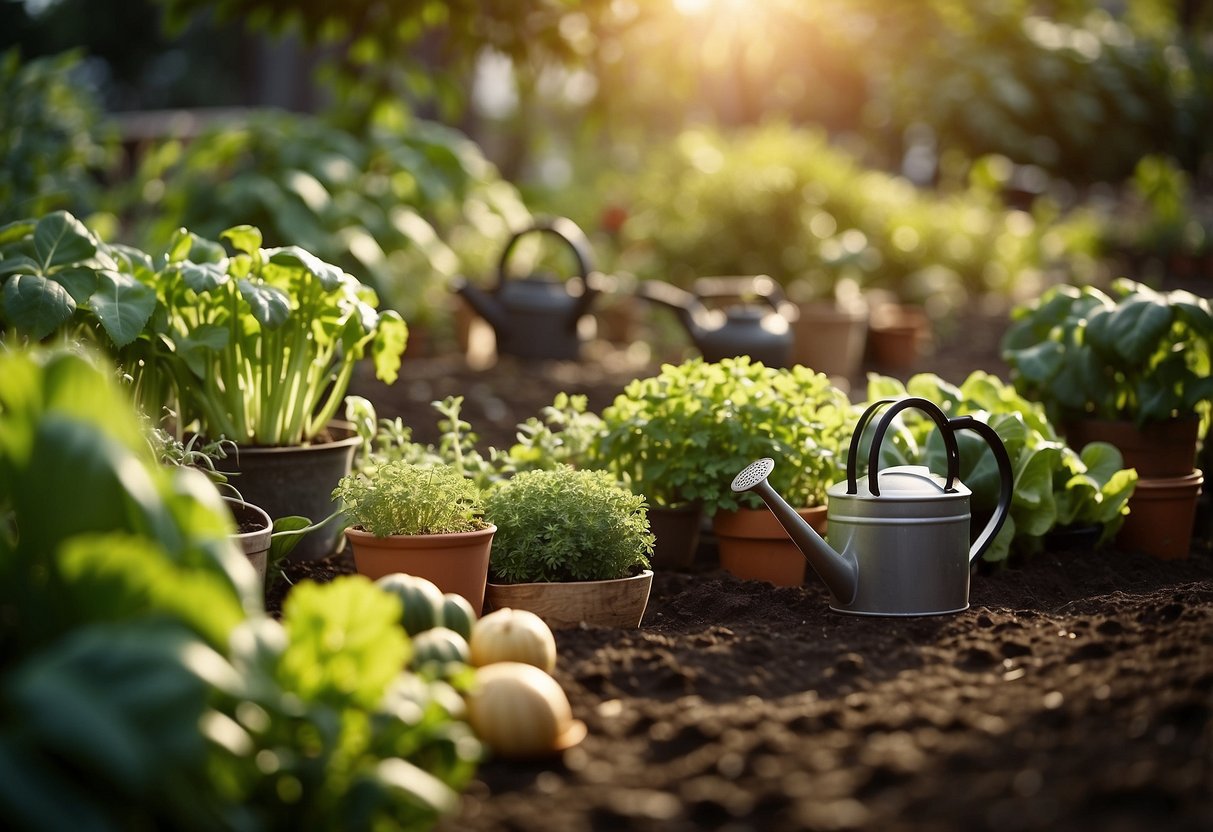
9. Incorporate Mulching

Mulching is an essential practice for anyone starting a vegetable garden. It helps retain soil moisture, suppresses weeds, and maintains an even soil temperature.
For the best results, apply a 3-4 inch deep layer of mulch around your plants. Anything less than 2 inches may not be effective at preventing weed growth.
When mulching, keep the material about 2 inches away from the stems of your plants to avoid moisture-related diseases.
Natural mulches such as straw, leaves, or grass clippings are excellent choices. These materials decompose over time and enrich the soil with organic matter.
Mulching early in the season can hasten the warm-up of the soil, benefiting early planting. For late-season mulching, it helps prepare the soil for the next growing season by adding nutrients and protecting against early spring weeds.
Those using transplants should mulch around the newly planted vegetables as they settle. If sowing seeds directly, wait until they germinate before adding mulch. Each method ensures the mulch does not hinder plant growth and encourages optimal soil conditions.
By incorporating mulching into your gardening routine, you create a healthier environment for your vegetable garden, ensuring better yields and less maintenance.
10. Practice Companion Planting
Companion planting is a gardening technique that involves growing specific plants close to each other to promote mutual benefits. This method can help in natural pest control, enhance growth, and improve overall yield. For instance, planting tomatoes alongside basil can repel harmful insects and potentially improve the flavor of the tomatoes.
Corn, beans, and squash, known as “the three sisters,” is a classic example. Corn provides a natural trellis for beans to climb, beans fix nitrogen in the soil, and squash helps retain soil moisture with its large leaves. Such combinations can lead to healthier plants and better harvests.
Some pairings to try in a vegetable garden include carrots and onions, which can deter pests that are common to both plants. Cucumbers and radishes can also grow together well; radishes often mature quickly and can help protect young cucumber plants by acting as a form of trap crop for pests.
Avoid planting crops with competing root systems, as this can inhibit growth. For example, keep root-heavy plants apart to ensure they have adequate space and nutrients. A well-thought-out companion planting plan can lead to a thriving, productive vegetable garden with less reliance on chemical treatments.
Choosing the Right Location
Choosing the right location for your vegetable garden is crucial for its success. It involves assessing sunlight and shade as well as analyzing the soil quality to ensure a conducive environment for your plants.
Assessing Sunlight and Shade
Vegetables need adequate sunlight to thrive. Most vegetables require at least six hours of direct sunlight a day. Tomatoes, peppers, and other sun-loving plants flourish best in full sunlight. Conversely, leafy greens such as lettuce and spinach can tolerate partially shaded areas, though they still benefit from ample light.
It’s important to observe the garden space at different times of the day. This helps identify which areas receive consistent sunlight and which are shaded. Note the orientation of nearby structures and trees that may cast shadows. The ideal garden spot maintains a balance of sunlight hours appropriate for the types of vegetables you plan to grow.
Soil Quality Considerations
Soil quality plays a significant role in the health of your vegetable garden. Well-draining soil rich in organic matter supports robust plant growth. Sandy loam or loamy soil types are often preferred for vegetable gardening due to their balance of drainage and nutrient retention.
Testing the soil’s pH level can inform necessary amendments. Most vegetables grow best in slightly acidic to neutral soil (pH 6-7). Adding compost or well-rotted manure enriches the soil with essential nutrients. Avoid low-lying areas where water tends to pool, as overly wet conditions can lead to root rot and other issues. Using raised beds or improving soil structure with organic matter can help in these situations.